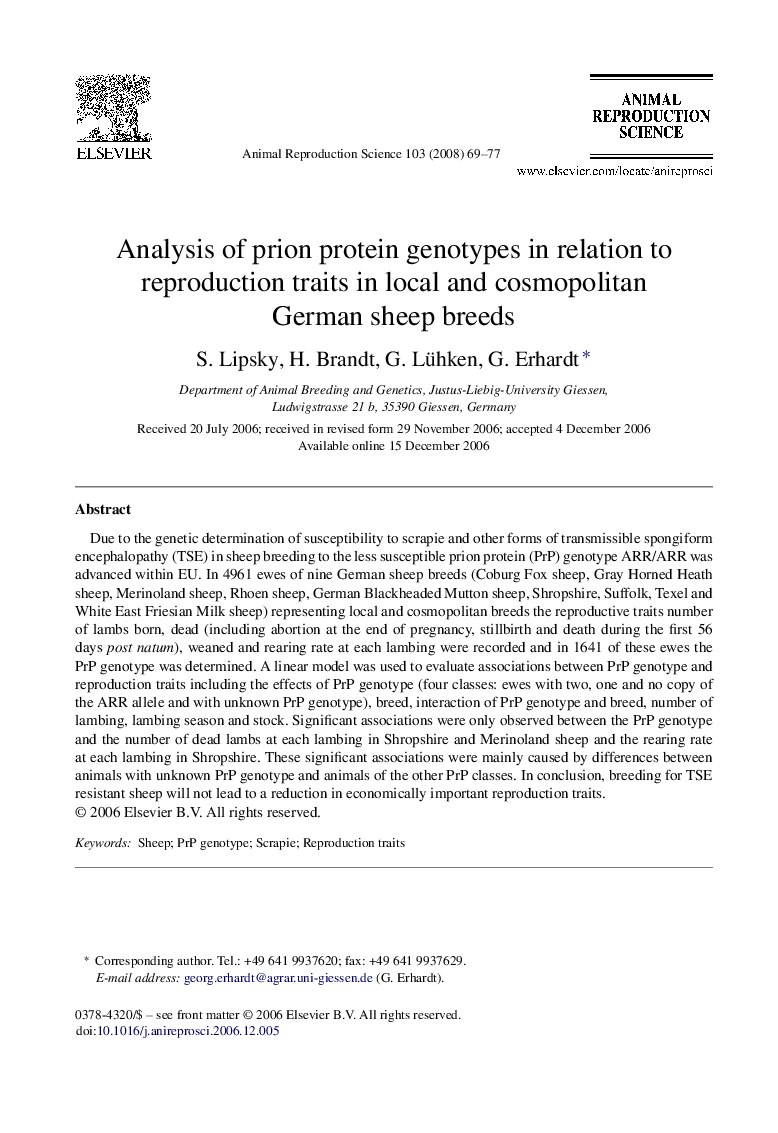| Article ID | Journal | Published Year | Pages | File Type |
|---|---|---|---|---|
| 2074638 | Animal Reproduction Science | 2008 | 9 Pages |
Due to the genetic determination of susceptibility to scrapie and other forms of transmissible spongiform encephalopathy (TSE) in sheep breeding to the less susceptible prion protein (PrP) genotype ARR/ARR was advanced within EU. In 4961 ewes of nine German sheep breeds (Coburg Fox sheep, Gray Horned Heath sheep, Merinoland sheep, Rhoen sheep, German Blackheaded Mutton sheep, Shropshire, Suffolk, Texel and White East Friesian Milk sheep) representing local and cosmopolitan breeds the reproductive traits number of lambs born, dead (including abortion at the end of pregnancy, stillbirth and death during the first 56 days post natum), weaned and rearing rate at each lambing were recorded and in 1641 of these ewes the PrP genotype was determined. A linear model was used to evaluate associations between PrP genotype and reproduction traits including the effects of PrP genotype (four classes: ewes with two, one and no copy of the ARR allele and with unknown PrP genotype), breed, interaction of PrP genotype and breed, number of lambing, lambing season and stock. Significant associations were only observed between the PrP genotype and the number of dead lambs at each lambing in Shropshire and Merinoland sheep and the rearing rate at each lambing in Shropshire. These significant associations were mainly caused by differences between animals with unknown PrP genotype and animals of the other PrP classes. In conclusion, breeding for TSE resistant sheep will not lead to a reduction in economically important reproduction traits.
